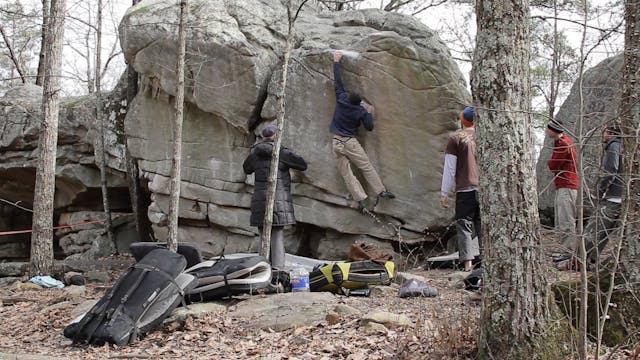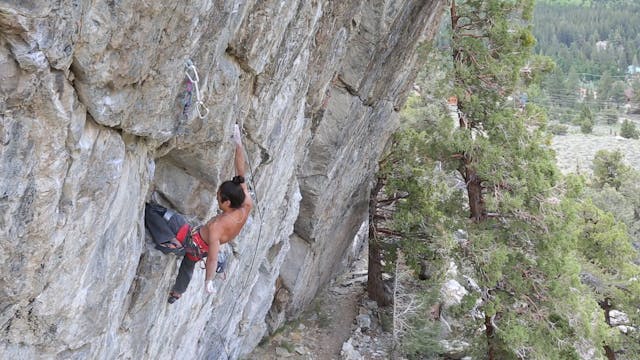Climbing Movement: 15. Body Tension
Climbing Movement
•
1m 48s
Maintaining body tension helps a climber minimize unnecessary movement or swinging.
A loss in body tension between hand and footholds often results in undesired swings away from the wall. This greatly increases your chances of falling.
Maintaining body tension between hand and footholds gives the climber more control while climbing. Precise movement saves energy, and will increase the time a climber can spend on the wall.
There are two common ways a climber will lose their body tension while climbing:
1. By allowing themselves to become too stretched out while climbing: A good way to avoid becoming too extended, is to make one or more foot movements for every hand move.
If you find yourself doing three, four, or five hand moves without moving your feet, chances are your feet are about to cut away and your body is about to swing away from the wall.
2. By climbing with bent arms: When you pull with your arms and upper body, you will in turn be pulling your own body weight off of the footholds, and losing body tension. Try to climb with straight arms whenever possible.
Finding the balance of power between pushing on your footholds and pulling with your arms can be tricky. The ability to maintain body tension, and know when to cut away the feet, are skills found in every advanced climber’s toolkit.
We hope you found this video helpful. Feel free to comment below with questions or thoughts!
Please remember, climbing is inherently dangerous. Climb at your own risk.
Up Next in Climbing Movement
-
Climbing Movement: 16. Opposition vs....
Climbers use the forces of opposition and compression to their advantage. These forces turn seemingly impossible holds or positions into usable, climbable surfaces.
Compression:
Examples of using compression forces to your advantage include the action of climbing an “arete” (i.e. corner),...
-
Climbing Movement: 17. The DeadPoint
“Deadpointing” is a term used to describe an advanced, climbing movement technique. That stated it is a fun move to execute, easy to learn, and can help you bump up to the next grade of climbing.
Imagine you are fairly extended, and about to do a hard move. Gravity is pulling at you, and tryin...
-
Climbing Movement: 18. Resting While ...
Here we review the opposite of movement. Specifically, resting!
The importance of resting while climbing cannot be stressed enough. Whether you are working on a tall bouldering project or a long route, if at first you don’t succeed, consider taking a rest.
Resting on route or between attem...


